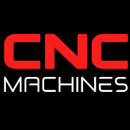Strategies for Future-Proofing Your Fabrication Business: Ensuring Long-Term Success

Future-Proofing Your Fabrication Business: Strategies for Long-Term Success
In an ever-evolving manufacturing landscape, fabrication businesses face the challenge of adapting to changing market conditions while maintaining competitiveness and profitability. Future-proofing your fabrication business requires a proactive approach that incorporates innovative strategies, embraces new technologies, and focuses on sustainability.
1. Invest in Advanced Technologies
Embrace Automation
Automation technologies, such as CNC machines, robotic arms, and automated guided vehicles (AGVs), can enhance productivity and efficiency. By integrating automation into your fabrication processes, you can:
- Reduce Labor Costs: Automation minimizes the reliance on manual labor, allowing your workforce to focus on higher-value tasks.
- Increase Production Speed: Automated processes enable faster turnaround times, helping you meet customer demands more effectively.
Leverage Digital Tools
Adopt digital tools like CAD/CAM software for design and manufacturing processes. These tools enhance precision, streamline workflows, and facilitate collaboration among teams. Additionally, consider investing in IoT (Internet of Things) solutions to enable real-time monitoring and data analysis for better decision-making.
2. Prioritize Employee Training and Development
Continuous Learning
As technology advances, so must your workforce. Invest in training programs to ensure your employees stay updated on the latest fabrication techniques, tools, and technologies. Encourage a culture of continuous learning by:
- Offering Workshops and Certifications: Provide opportunities for employees to attend workshops, seminars, and obtain certifications in relevant skills.
- Promoting Cross-Training: Encourage cross-training among team members to enhance versatility and adaptability within your workforce.
Foster a Collaborative Environment
Create an open environment where employees feel empowered to share ideas and contribute to process improvements. This collaborative approach can lead to innovative solutions and a more engaged workforce.
3. Focus on Sustainability
Adopt Eco-Friendly Practices
Sustainability is increasingly important in manufacturing. Implementing eco-friendly practices can help reduce costs, enhance your brand reputation, and meet customer expectations. Consider the following strategies:
- Reduce Material Waste: Optimize your fabrication processes to minimize scrap and waste. Implement recycling programs to repurpose leftover materials.
- Use Sustainable Materials: Explore using eco-friendly materials and suppliers who prioritize sustainability in their operations.
Promote Energy Efficiency
Invest in energy-efficient machinery and equipment to lower operational costs. Additionally, consider conducting energy audits to identify areas for improvement in energy consumption.
4. Enhance Customer Relationships
Focus on Customization
In today’s competitive market, customers are increasingly looking for personalized solutions. Enhance your customer relationships by offering customization options for your products. This can include:
- Tailored Designs: Work closely with clients to create custom designs that meet their specific needs.
- Flexible Production Capabilities: Implement flexible manufacturing processes that allow you to adapt to changing customer demands quickly.
Build Strong Communication Channels
Maintain open lines of communication with your clients throughout the fabrication process. Regular updates on project progress, addressing concerns, and seeking feedback can help build trust and long-term relationships.
5. Monitor Industry Trends and Competitors
Stay Informed
Keep abreast of industry trends and emerging technologies by subscribing to industry publications, attending trade shows, and participating in networking events. Understanding market trends can help you anticipate changes and adapt your strategies accordingly.
Competitive Analysis
Regularly assess your competitors to identify their strengths and weaknesses. Analyze their strategies and learn from their successes and failures to enhance your own business practices.
6. Diversify Your Offerings
Explore New Markets
Consider diversifying your product offerings or entering new markets to mitigate risks associated with market fluctuations. This could include expanding into complementary services or targeting different industries that require fabrication solutions.
Embrace Innovation
Encourage innovation within your organization by fostering a culture that embraces new ideas and approaches. This can lead to the development of new products or services that cater to emerging market demands.
Conclusion
Future-proofing your fabrication business is essential for navigating the challenges of an ever-changing market landscape. By investing in advanced technologies, prioritizing employee training, focusing on sustainability, enhancing customer relationships, monitoring industry trends, and diversifying your offerings, you can position your business for long-term success.
As the fabrication industry continues to evolve, adopting these strategies will not only help you remain competitive but also foster innovation and growth, ensuring your business thrives in the years to come. Embracing change and being proactive in your approach will ultimately set your fabrication business apart in a dynamic market.


